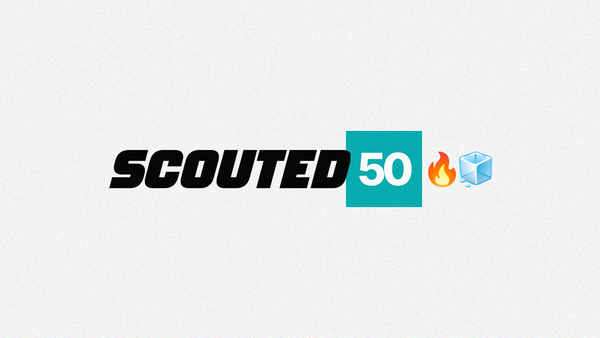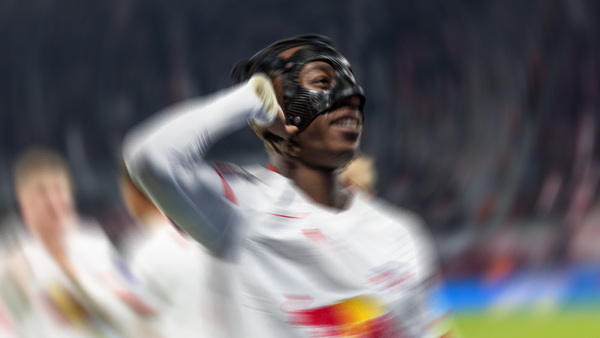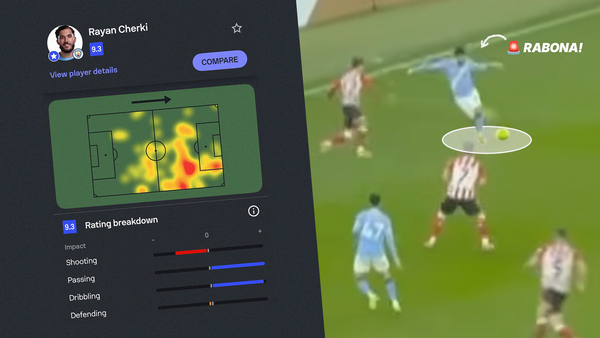How to recruit like the Belgian Pro League
Diverse and youthful recruitment defines the Belgian Pro League and has set it on a path to crash the Big Five - this is how it’s done
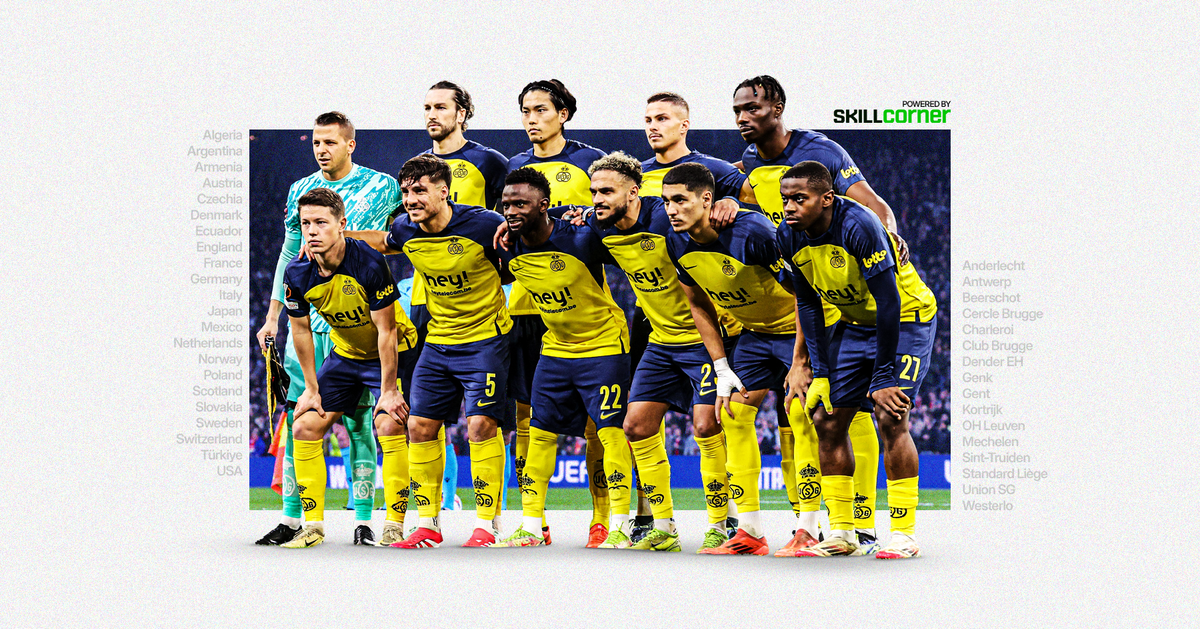
Belgian Pro League clubs continually find undervalued young talent from every corner of the world, sign them, develop them, then sell them for significant profit. It’s an approach that has helped Belgian sides compete in UEFA Club Competitions and put them on the path to overtake Portugal and the Netherlands in the UEFA coefficient, with France in their sights.
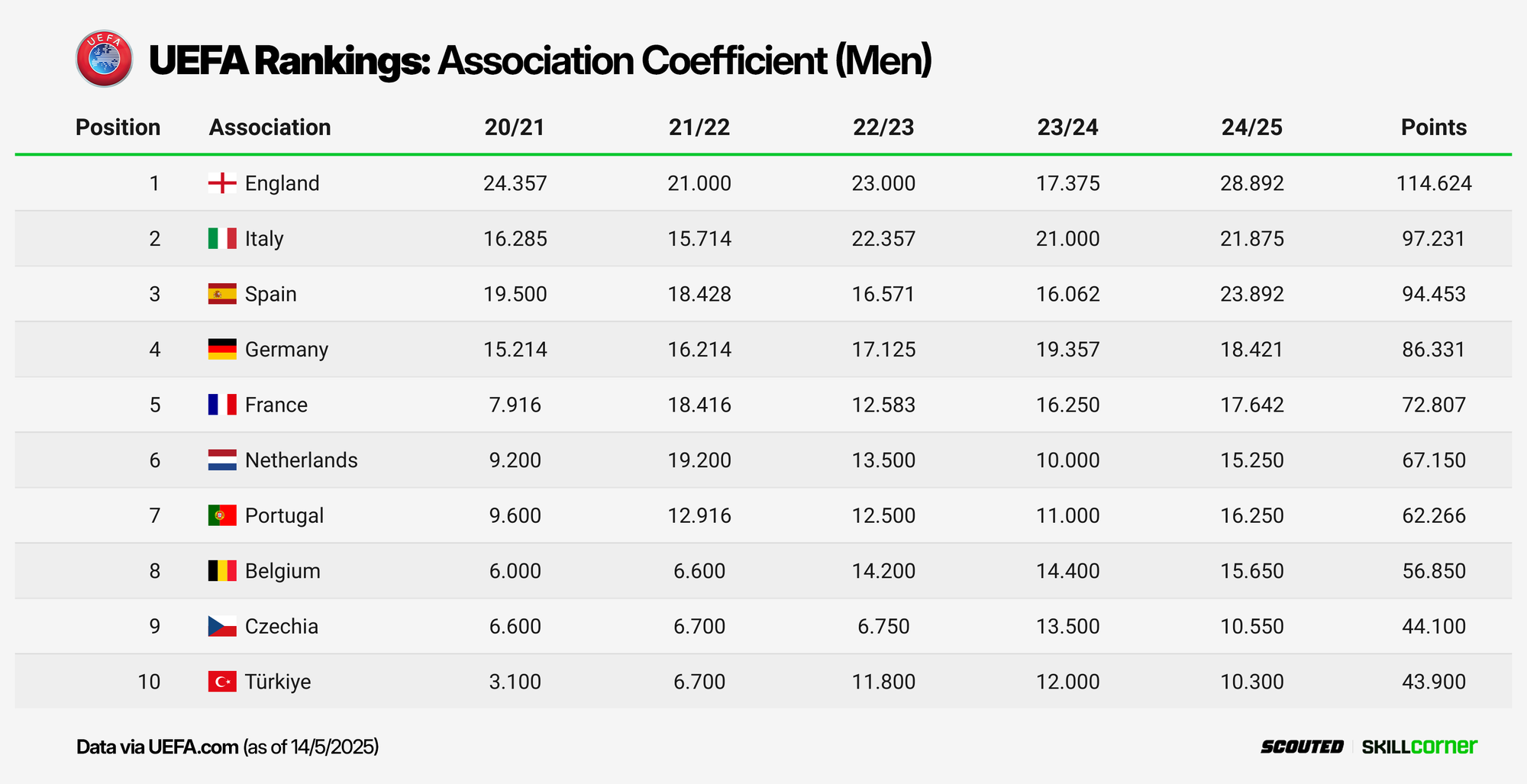
This astute and intelligent recruitment powered Club Brugge to the last sixteen of the 2024/25 UEFA Champions League and looks set to end Royale Union Saint-Gilloise’s 90-year wait for a top-flight league title.
Both achievements become even more remarkable when you consider that Belgian clubs sell their best players summer after summer, leaving significant holes in squads looking to compete on the biggest stage, usually coming up against these stalwart alumni under the European night lights.
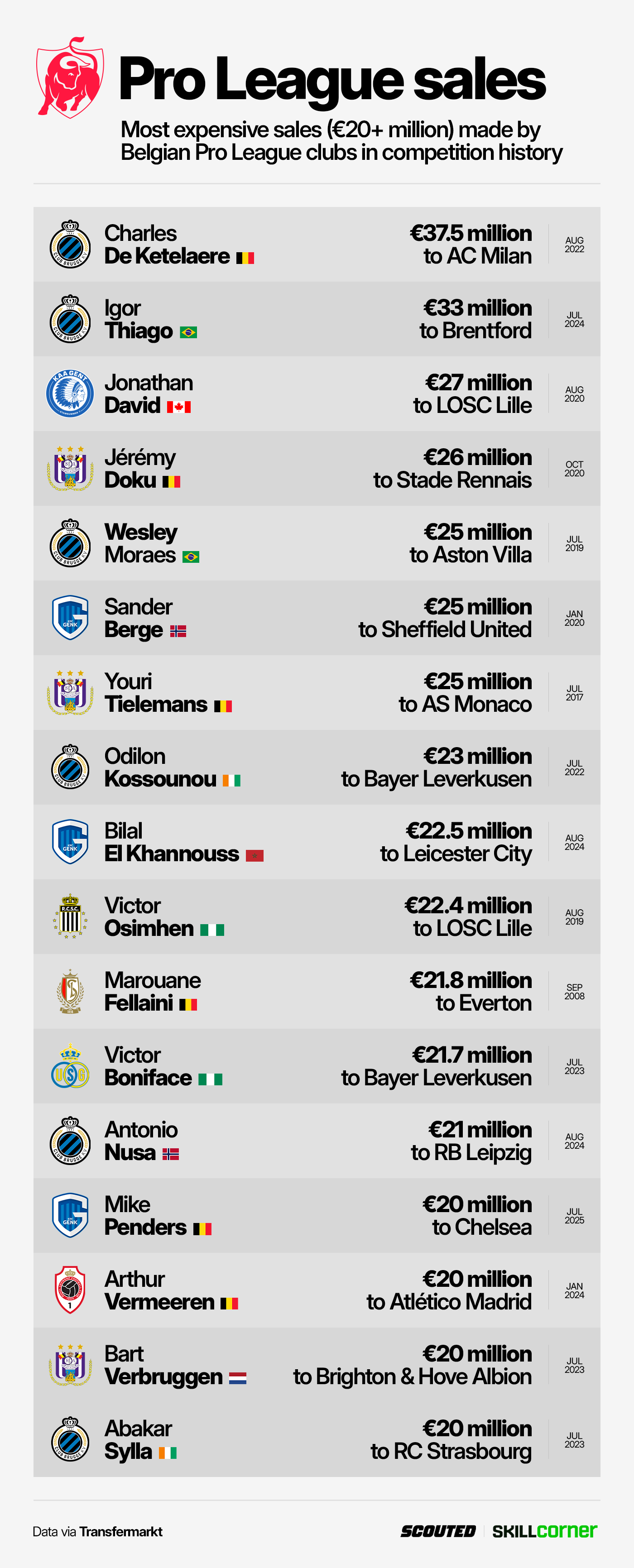
To fill those holes and once again attempt to bridge the gap, they turn to uncut prospects from unusual markets.
If you like to keep track of the up-and-coming prospects around the world, you’ll have tremendous fun trawling through Transfermarkt and looking at what Pro League clubs have been doing in the transfer window. From the Americas and Asia to Africa and the most mysterious corners of Europe – no market is too far, no prospect is too obscure, no deal is too difficult. Wherever there is talent, Belgian clubs will spot it and sign it.
In the most recent January transfer window, for instance, Pro League clubs signed players from the following countries:
🇩🇿 Algeria
🇦🇷 Argentina
🇦🇲 Armenia
🇦🇹 Austria
🇨🇿 Czech Republic
🇩🇰 Denmark
🇪🇨 Ecuador
🏴 England
🇫🇷 France
🇩🇪 Germany
🇮🇹 Italy
🇯🇵 Japan
🇲🇽 Mexico
🇳🇱 Netherlands
🇳🇴 Norway
🇵🇱 Poland
🏴 Scotland
🇸🇰 Slovakia
🇸🇪 Sweden
🇨🇭 Switzerland
🇹🇷 Türkiye
🇺🇸 USA
If you factor in B teams and second-tier clubs, the following countries are added to the list:
🇧🇬 Bulgaria
🇨🇦 Canada
🇨🇴 Colombia
🇨🇾 Cyprus
🇫🇮 Finland
🇷🇴 Romania
🇸🇳 Senegal
🇰🇷 South Korea
🇻🇪 Venezuela
That’s 31 different countries – excluding Belgium – from five different continents. The only land masses to miss out on the Pro League privilege were Oceania and Antarctica. They’ve bought plenty from Australia and New Zealand before, and you wouldn’t put it past a Belgian club to sign someone from the south pole.
Furthermore, the age profile of the recruits is generally young. Whilst there are some exceptions, the go-to plan of action is one that most Belgian clubs adhere to: sign young talent that want to prove themselves and make the leap to the next level. The average age of the teams that participated this season was 26 years old, young for the level, and it’s very common to see clubs replenish their talent stocks with batches of emerging prospects.
But how do Pro League clubs continue to defy the odds? How have they maintained their climb up the UEFA Coefficient ladder despite the constant churn? How do the little-known players they sign make almost immediate impacts?
The answer is that they sign top-level athletes. It’s an approach that permeates their recruitment and was a clear emphasis in their business last summer.
Take the following eye-catching Pro League attackers as an example – they all rank well above the competition average for speed and intensity, and all highlighted players were signed from various corners of the globe.
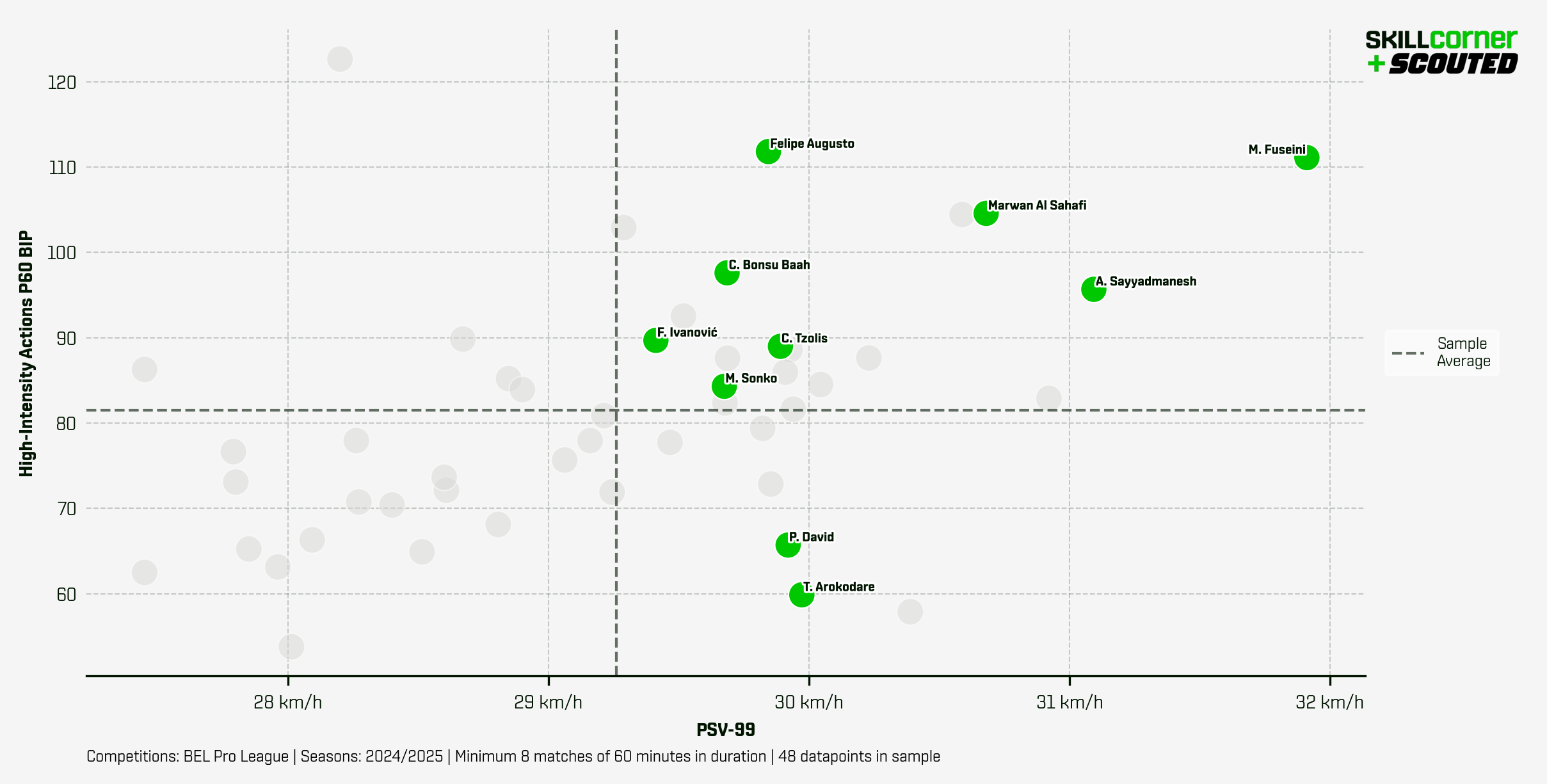
That selection includes the top goalscorer who found his European feet in Latvia, an Iranian and a Saudi Arabian, a couple of young wingers developed in Sweden and Norway, a handful of exciting Royale Union Saint-Gilloise forwards signed from Austria, Croatia and Estonia, a Brazilian brute, and one of the league’s very best in Christos Tzolis. Together, they have scored over 70 goals this season alone.
Slide the microscope to explosiveness and most still rank comfortably above the average Pro League player too, with Mohammed Fuseini and Christopher Bonsu Baah – dynamic Ghanaian forwards signed from Sturm Graz and Sarpsborg respectively – on a stage of their own along with 21-year-old Felipe Augusto, whom Cercle Brugge picked up from Corinthians.
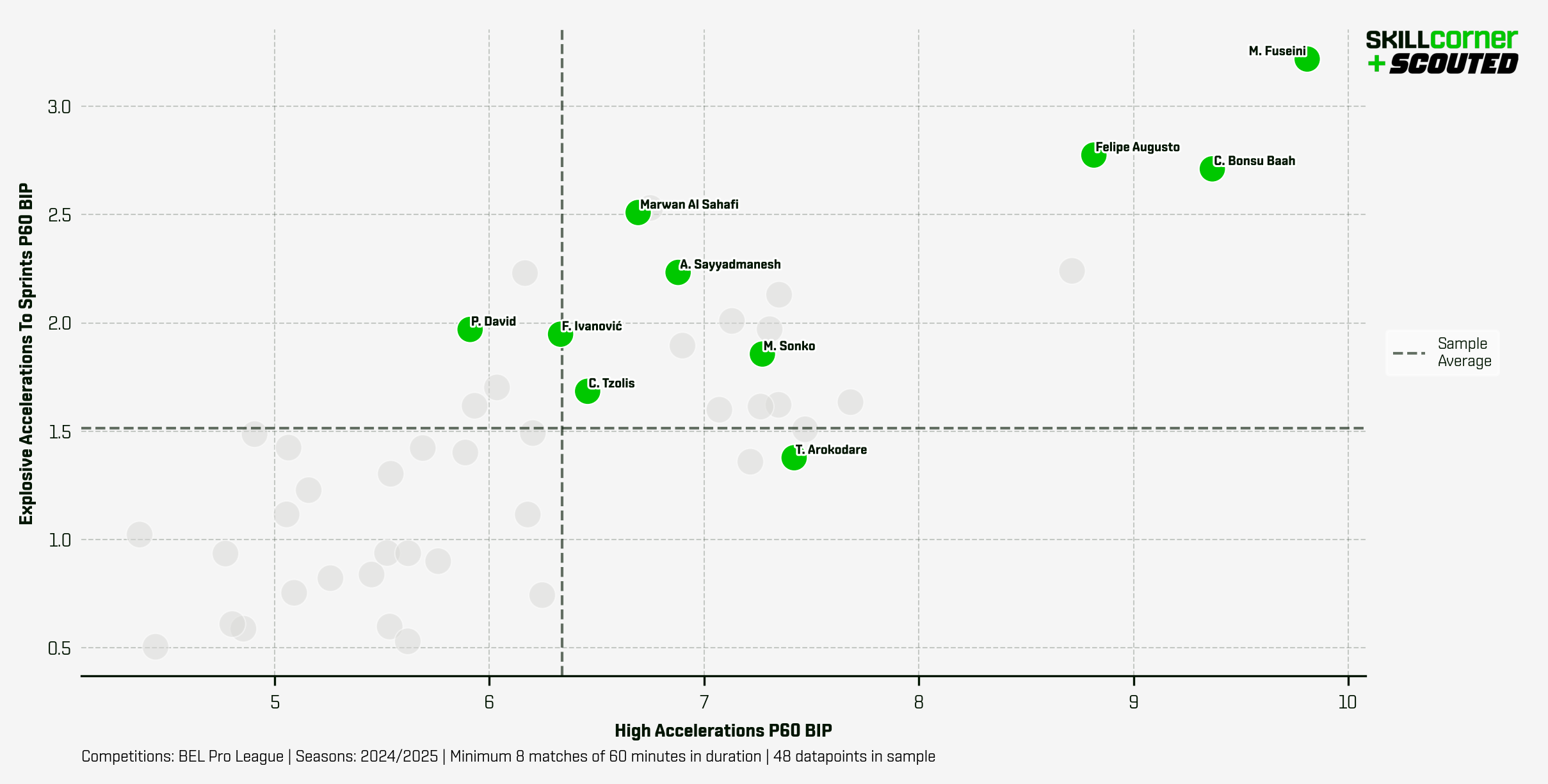
Being of such an athletic standard ensures two things:
- One: They have the platform to make an immediate impact at the higher level. It doesn’t mean they will - there are various other factors at play - but it gives them an advantage.
- Two: They have the potential to play at a higher level again. Adding prospects that can play straight away and be sold for profit down the line is a pillar of the wider Pro League approach.
And this doesn’t just apply to forwards. The below graph highlights a handful of the most intense midfielder runners in the Pro League.

Ranking highly on the scale of High-Speed Runs and Accelerations, that select six are the most relentless midfield runners Belgium’s top-flight has to offer this season. All six are examples of the diverse, youthful and profitable Pro League recruitment:
- Anouar Ait El Hadj (Royale Union Saint-Gilloise)
An attack-minded midfielder who came through at Anderlecht before moving to Genk and now USG at the start of this season, where he has become a regular in a title-challenging run. - Ezechiel Banzuzi (OH Leuven)
A regular Dutch youth international picked up from Eerste Divisie club NAC Breda in neighbouring Netherlands for €1.2 million in 2023. He has since agreed a move to RB Leipzig this summer for €16 million. - Omri Gandelman (KAA Gent)
Signed from Maccabi Netanya for €2.35 million in 2023, he has become a high-performing European regular with a big athletic presence from box to box. - Roman Květ (FCV Dender)
On loan from Viktoria Plzeň after a gradual progression through Czech football, the Czech midfielder spent last season on loan at Sivasspor. - Isaac Price (Standard Liège)
A graduate of the Everton academy signed by Standard Liège on a free transfer in 2023; he was a regular from the off and has since been sold to West Bromwich Albion for €3 million last January. - Rihito Yamamoto (STVV)
An eye-catching prospect in J2 League for Tokyo Verdy before moving to Gamba Osaka and then Japanese-owned STVV for €1 million in 2023, but has struggled to find a regular role in the team since.
Drop into the heart of the backline and the graph below highlights the value and potential in athletic Pro League centre-backs.
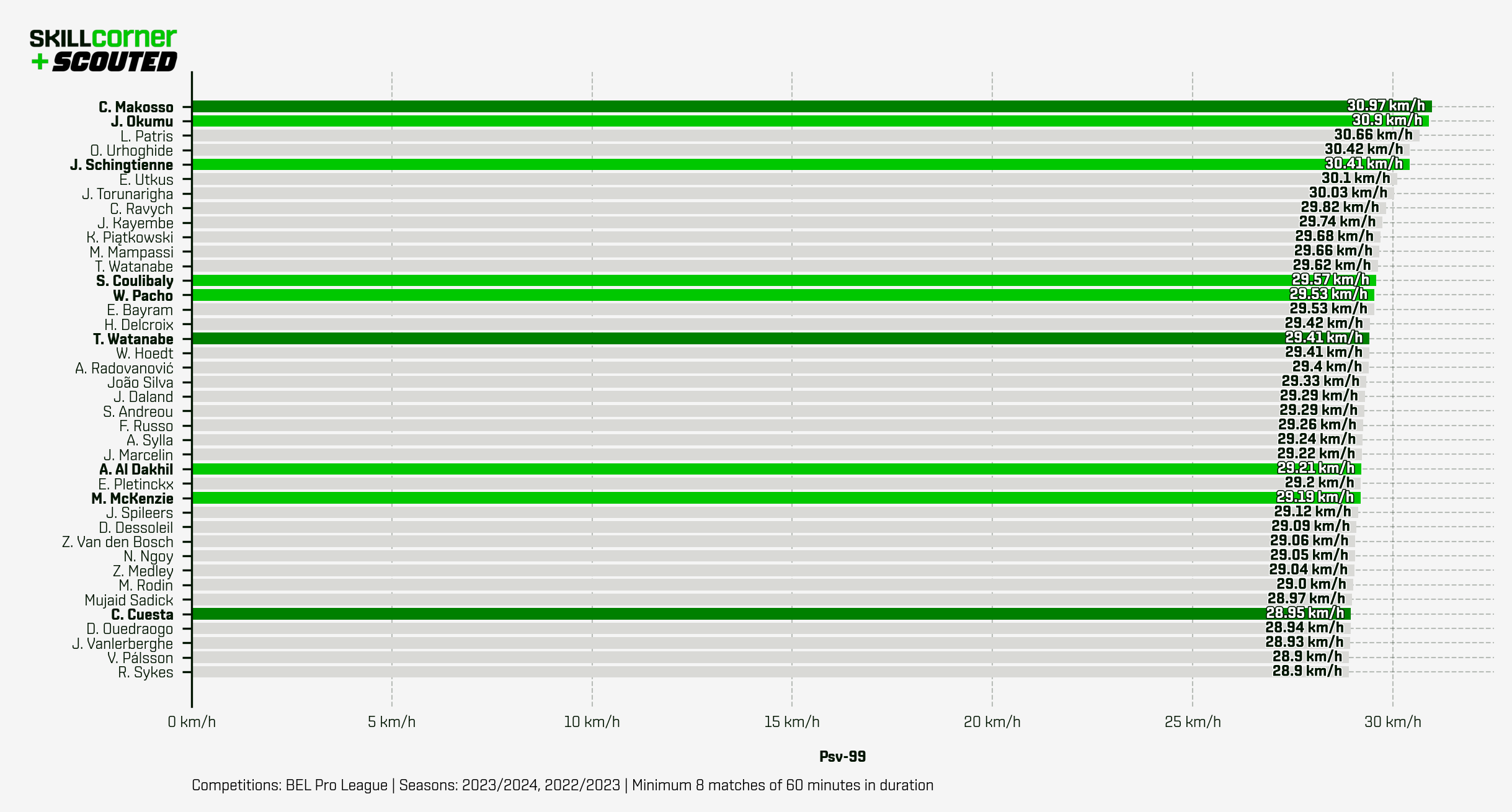
The half-dozen highlighted in the lighter green are all playing in a Big Five League currently, including Willian Pacho of Paris Saint-Germain, while two of the three highlighted in darker green are playing in the Championship and Turkish Süper Lig. All have been sold for significant profits with Tsuyoshi Watanabe slated to follow suit this summer. They were plucked from Colombia, Ecuador, France, Japan, Sweden, the US, and their own academies.
We can also look at Pro League examples of yesteryear to highlight the consistency and effectiveness of the collective approach.
Take a look at the top two High-Intensity Runners from Midfield during the 2023/24 Pro League season.
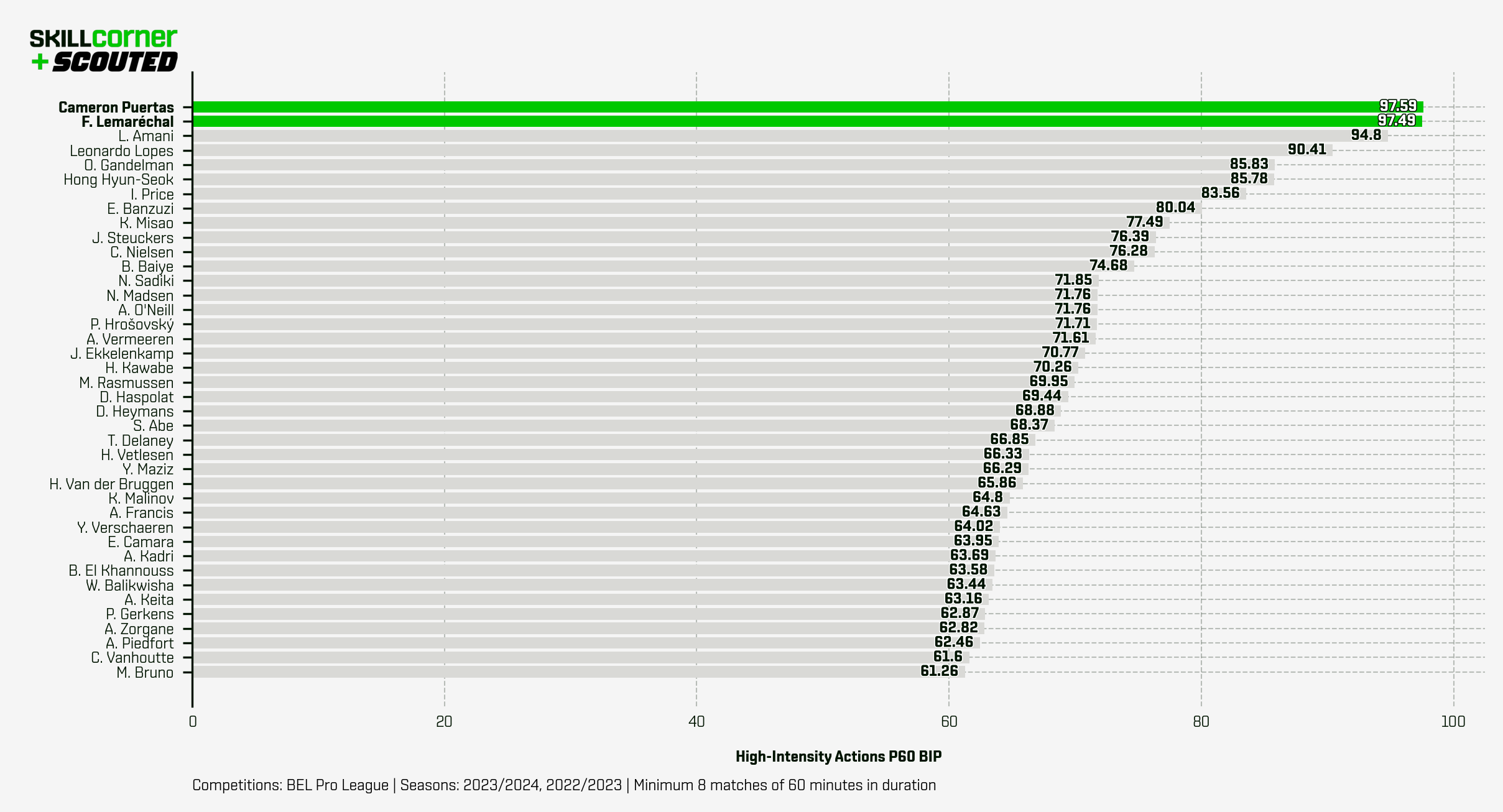
Cameron Puertas exploded into a 4,600-minute, 37-goal-and-assist contributor and was sold to Saudi Arabia for €15 million last August. He was signed for €1 million from Lausanne in 2022. Félix Lemaréchal is a graduate of the AS Monaco academy that spent last season on loan at Cercle Brugge before being signed by Chelsea-owned RC Strasbourg for €6 million last summer. He is now a regular under Liam Rosenior, impressing in Ligue 1.
Now let’s take a look at Forwards from that season.
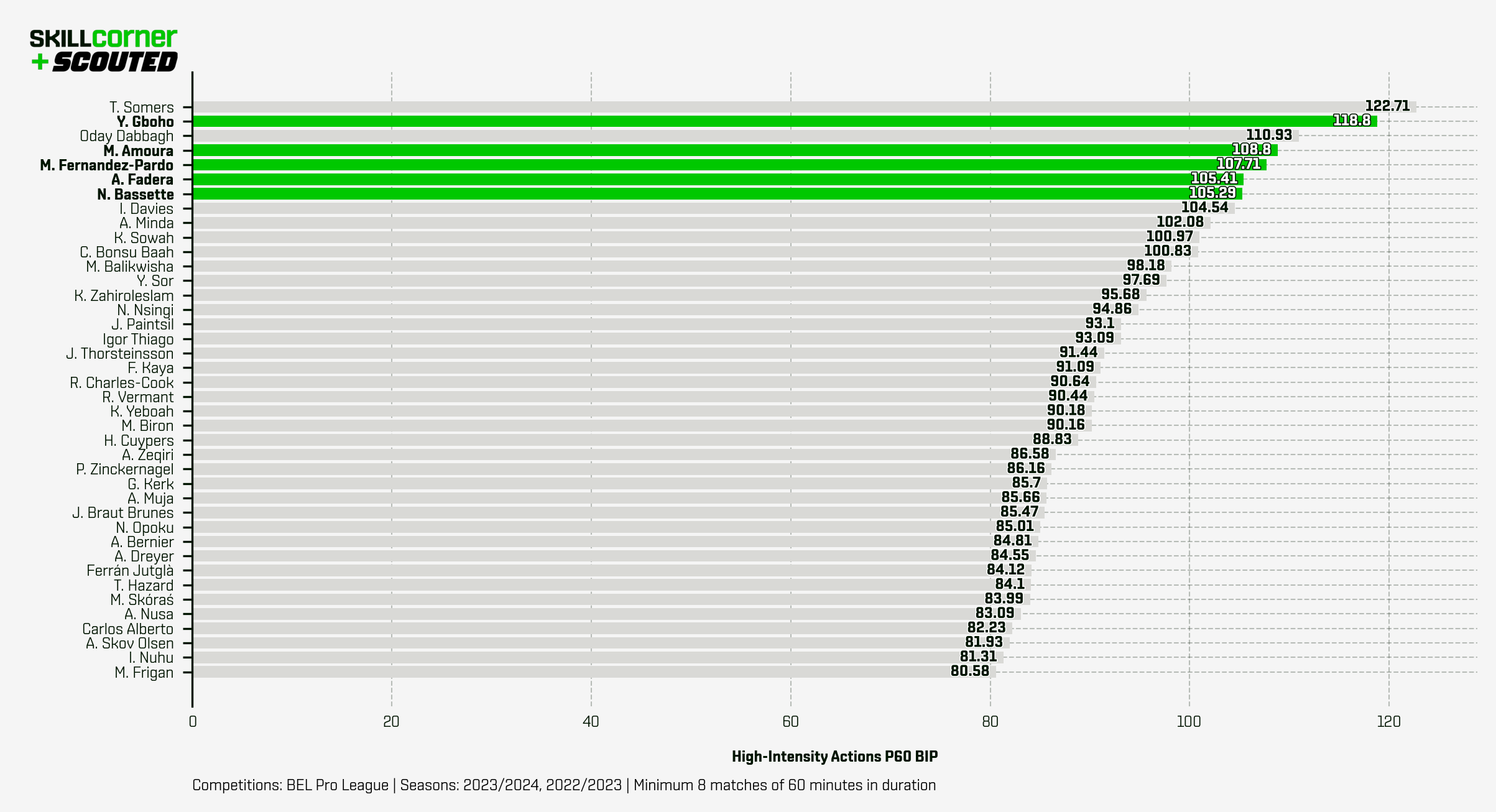
Mohamed Amoura, Yann Gboho, Matías Fernández-Pardo and Alieu Fadera all left the Pro League for VfL Wolfsburg, Toulouse, LOSC Lille and US Como in the Bundesliga, Ligue 1 and Serie A last year, while Norman Bassette was snapped up by Coventry City who have previous when it comes to finding exciting centre-forward prospects.
Gboho is Stade Rennais academy graduate that Cercle Brugge signed on a free transfer, Fernández-Pardo was picked up from Lille’s academy by Gent, Fadera is a Gambian that went from Zulte Waregem to Genk in Belgium after a stint in Slovakia, while Bassette is a Belgian that spent his final formative years in French football.
To contextualize these numbers, this is how Amoura, Gboho and Fadera compare to Big Five League peers this season.
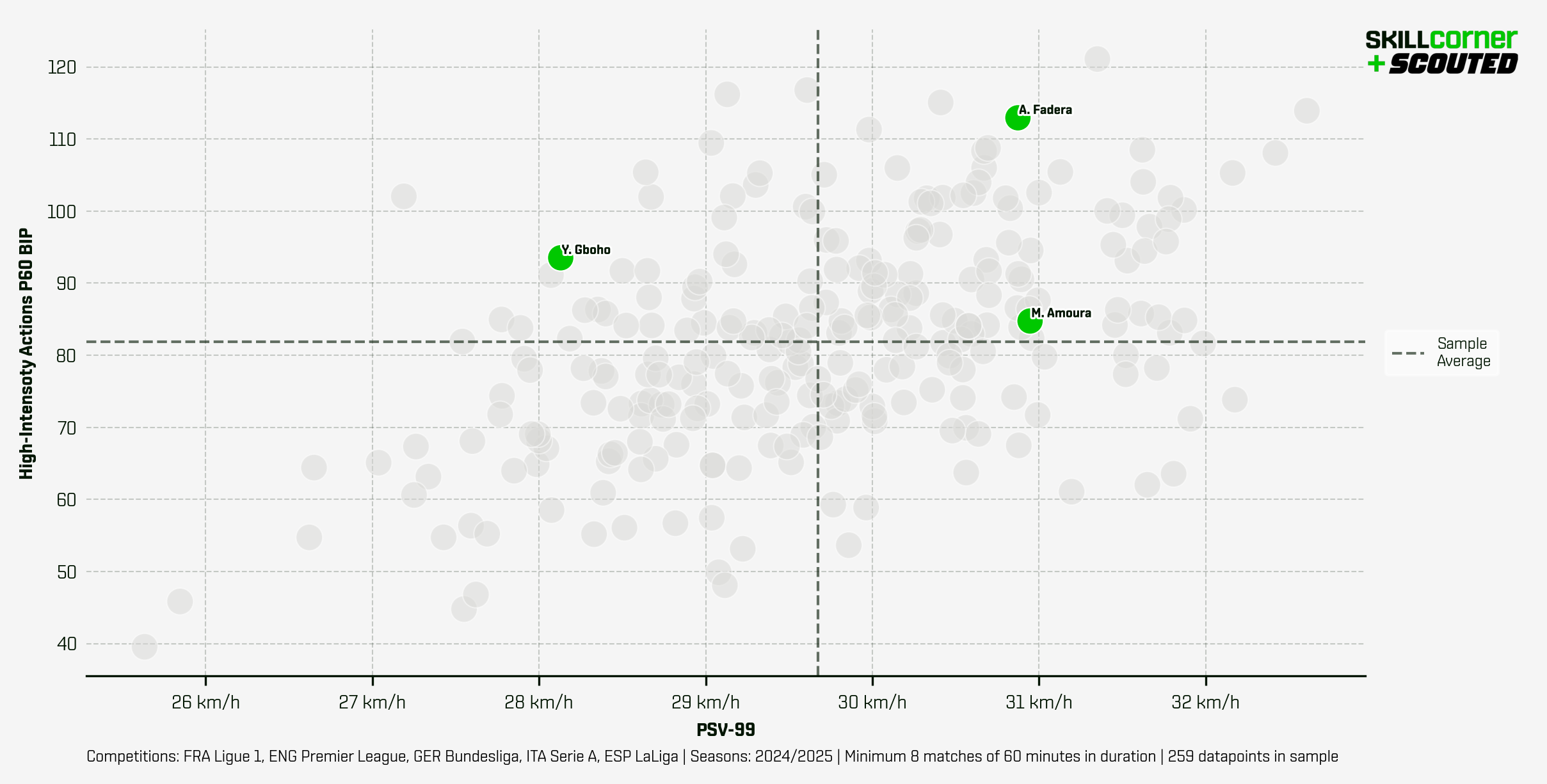
Meanwhile, Bassette is one of the standouts in the Big Five League second tiers.
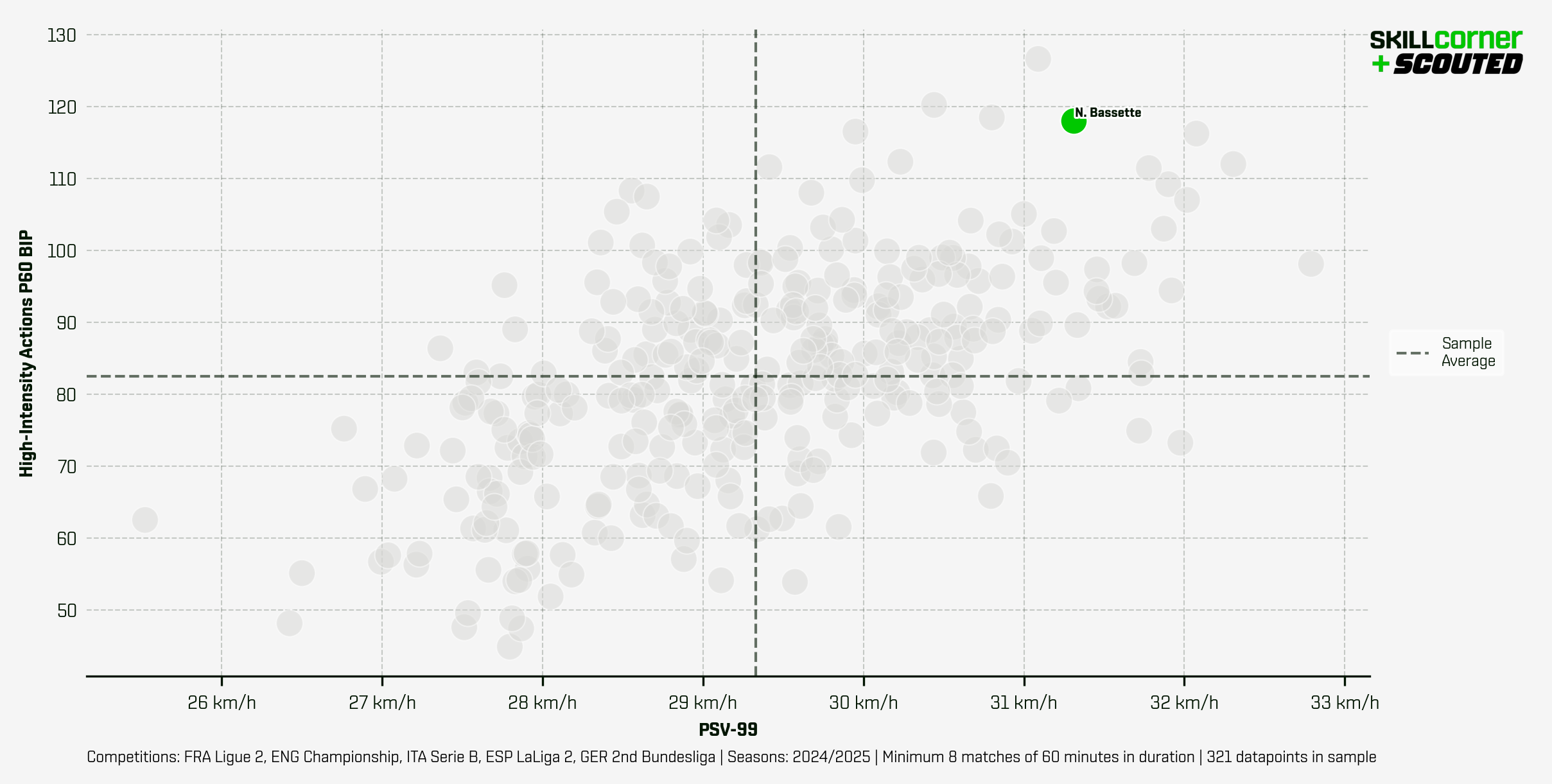
The bottom line? If you’re a great athlete in the Pro League, you’ll be a good athlete in the Big Five Leagues. Belgian clubs know that and are finding them from every corner of the world at prices well below their true market value. A point backed up by SkillCorner data.
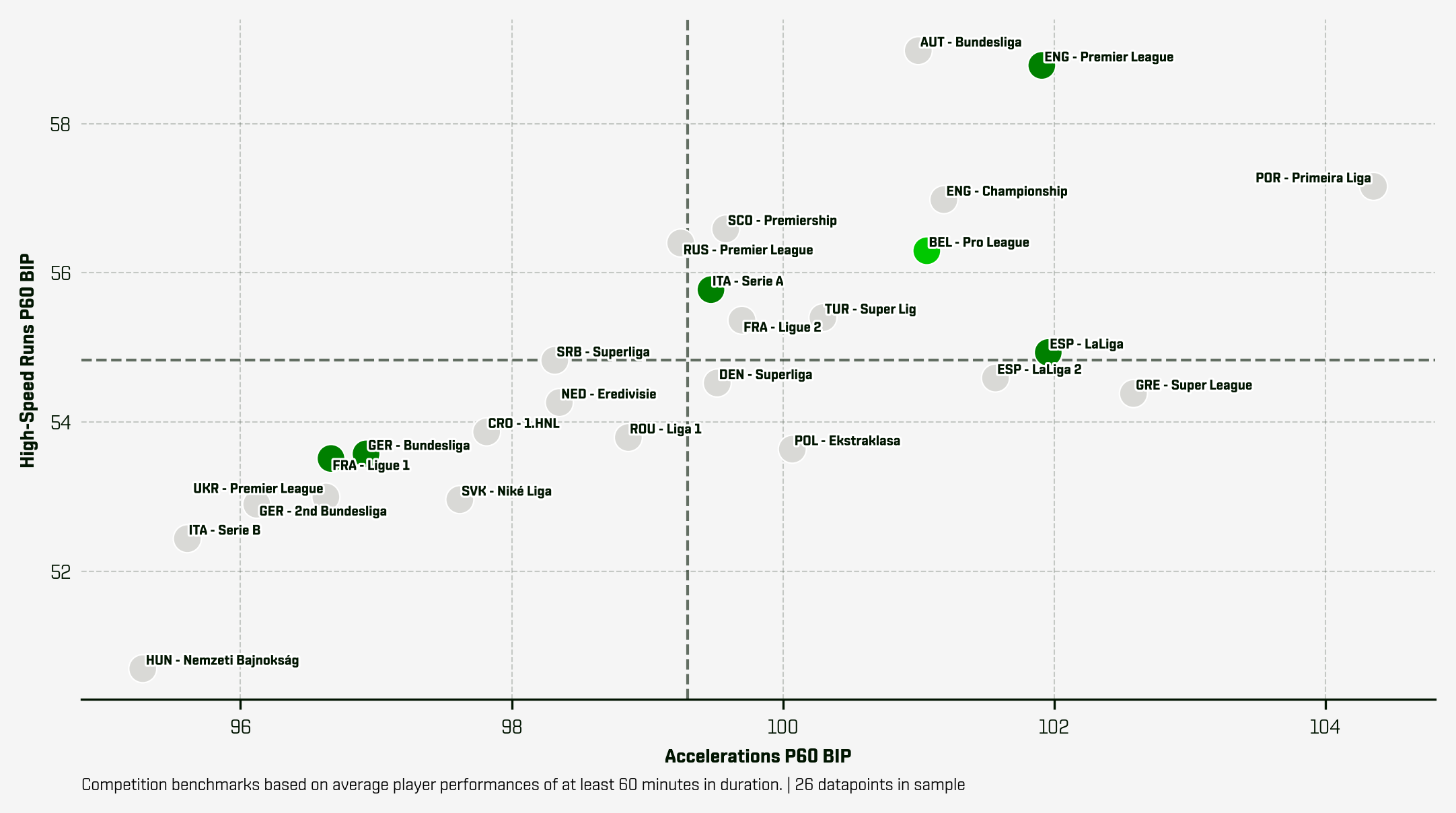
The Pro League’s combination of diverse recruitment with a youthful emphasis, propped up by an athleticism that compares favourably to the all-dominant Premier League – as well as countless other factors, such as language, culture and geography – makes it a near-perfect launchpad league for up-and-coming prospects from all corners of the world.
How Belgian clubs are developing, deploying and ultimately offloading these prospects is turning the Pro League into a contender to become one of the Big Five in its own right within the next decade.
As for the future, the key question is this: which other little-known prospects will be picked up by Pro League clubs next? Let’s use SkillCorner to highlight a handful.
We’ll start in France, the most important market for Belgian clubs. Pro League outfits bring in players from their neighbours more than any other nation, which is unsurprising given the geographical proximity and cultural similarities.
One name that jumps off the screen in Ligue 2 is Abdoulaye Kanté.
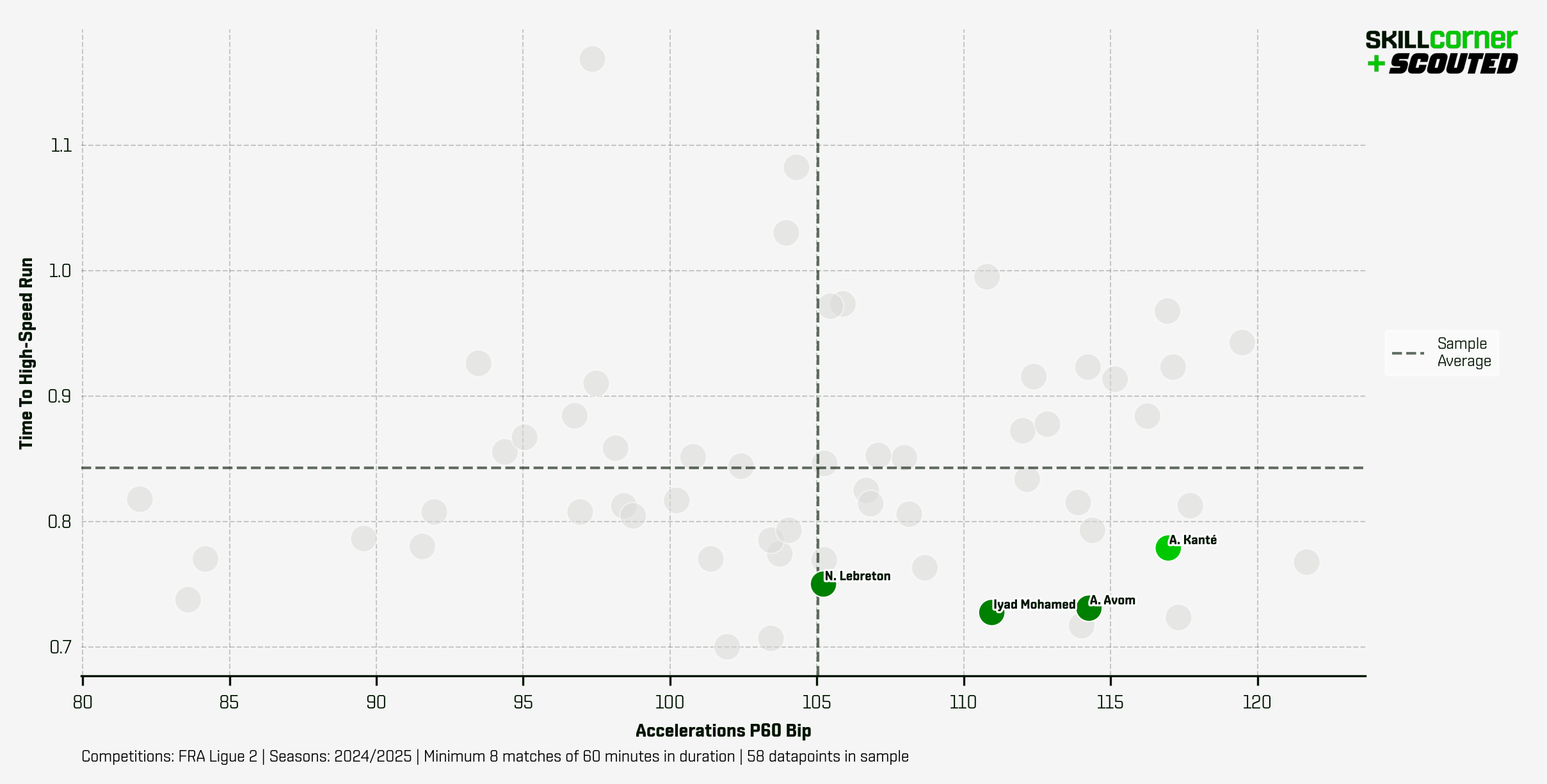
The 19-year-old has been a regular for ESTAC Troyes since the early knockings of last season, with his impressive athletic intensity showing in his ability to win the ball back. Interestingly, Iyad Mohamed was signed by noted talent-spotters Casa Pia in January, while Arthur Avom would have been an excellent option had Lorient not won promotion back to Ligue 1. Noé Lebreton, a 21-year-old with over 70 senior games to his name, has just been relegated at SM Caen – he is worth a look.
Expanding our search further, let’s have a look for a game-breaking forward in eastern Europe, another market in which Pro League clubs have found significant value. In terms of top-level athletes, you won’t find many more explosive than 22-year-old Camilo Mena. His numbers are outstanding in a data set that includes under-23 forwards from six top-flight leagues.
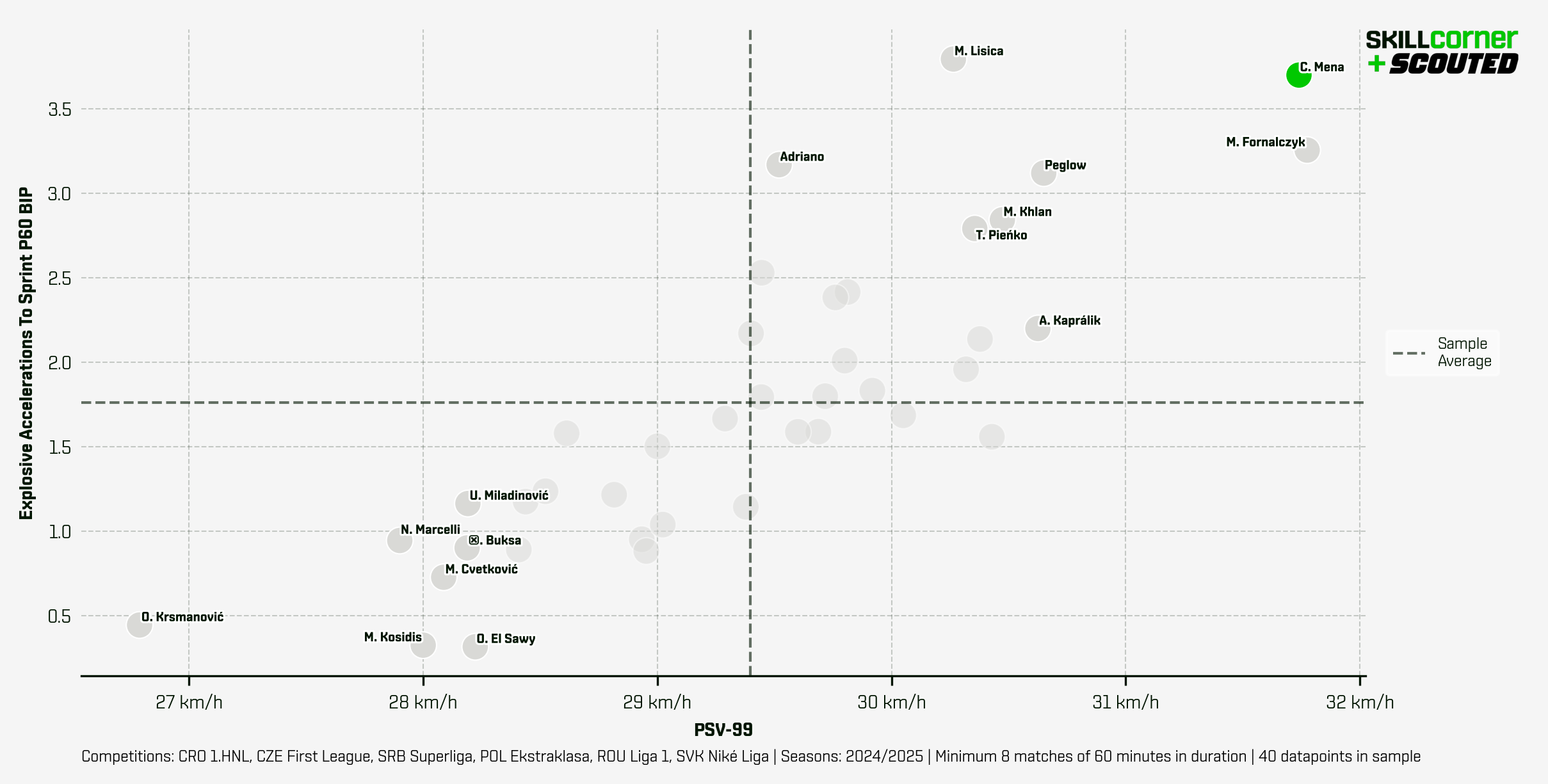
We knew the 22-year-old Colombian because he passed through Valmiera FC, a Latvian club renowned in scouting circles for their diverse recruitment, before landing in Poland. A right-footer that plays on the right wing, Mena has contributed to 11 goals for Lechia Gdańsk this season and has the athletic attributes to make a quick impact in Belgium.
Flying even further afield, let’s open our search up to Asia and the Americas. We’ll shift our focus to fast centre-backs now, a profile Pro League clubs have made extraordinary profits on as detailed earlier in the piece.
This data set includes 60 centre-backs aged 24-or-under from five top-flight leagues. Three names are of particular prominence: Kota Takai, Junossuke Suzuki and Kim Ju-sung.
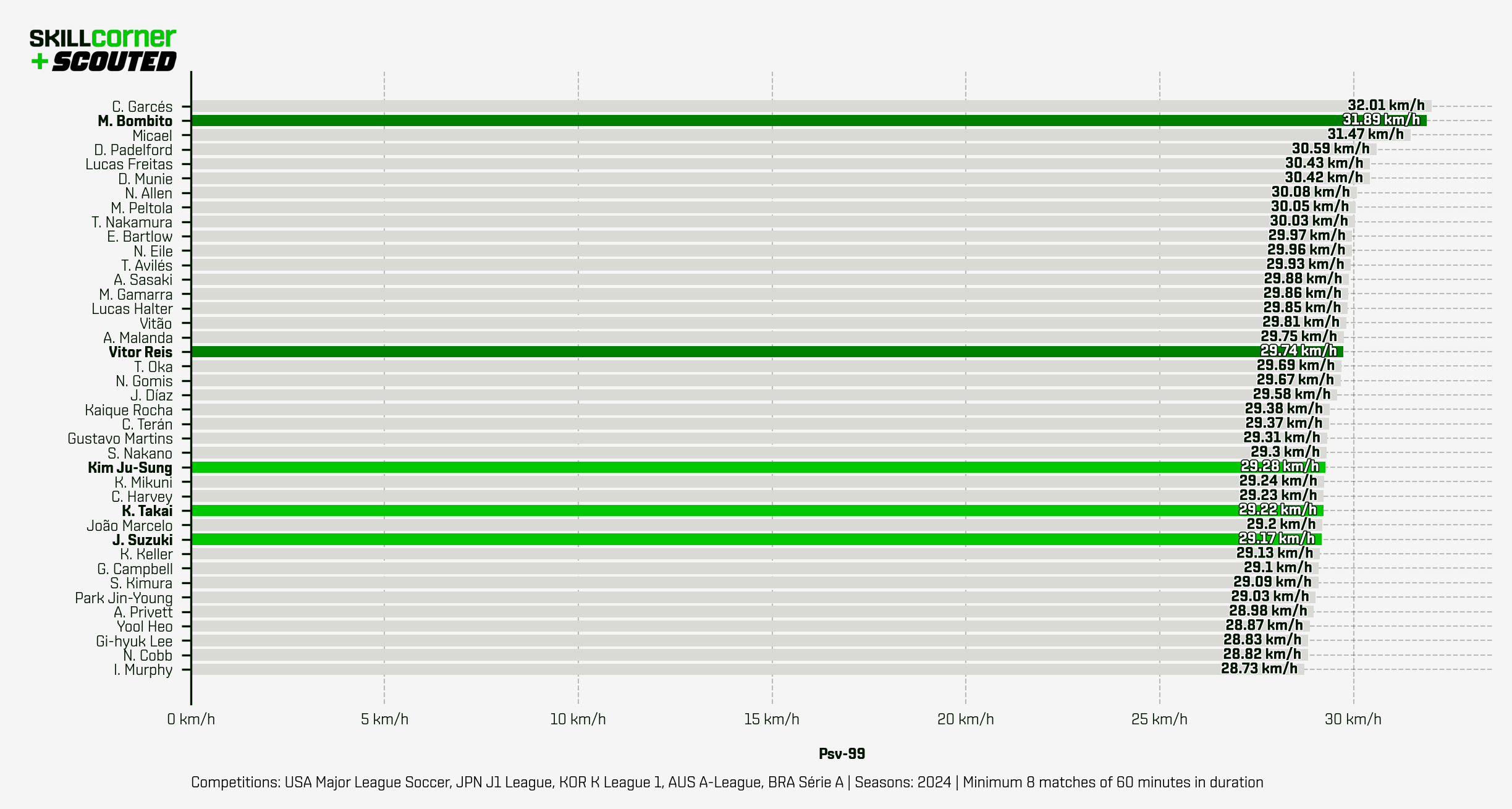
Kota Takai should need no introduction – he has been a SCOUTED favourite for a long time now and a subject of a previous SkillCorner analysis. Want the quick rundown? He’s one of the very best young talents in Japan right now, a defender with all the tools to play at a high level, and he absolutely should be landing in Europe this summer.
Hot on his heels should be 21-year-old Junnosuke Suzuki. A year older than Takai, he has racked up a similar level of J.LEAGUE experience to the Kawasaki Frontale defender over the last two seasons playing for Shonan Bellmare and is a highly-regarded prospect.
And then we have Kim Ju-sung of FC Seoul. At 24 years old, he is at an age where he would be expected to make an immediate mark in Belgium, doing so with an eye-catching profile that we picked up on a couple of years ago.
Now a starter for FC Seoul, Kim Ju-sung (2000 🇰🇷) is worth keeping an eye on in this season's K League. Left-footed centre-back, instincts are to squeeze the game, solid distribution in build-up, quite athletic. Contract (reportedly) expires at the end of this year.
— SCOUTED (@scoutedftbl) April 5, 2023
Note the other two highlighted as well, Moïse Bombito and Vitor Reis. They have moved directly to Big Five Leagues in the past year, from Colorado Rapids and Palmeiras to OGC Nice and Manchester City.
While Reis was always on the fast track to the elite of the elite, at €7 million, Bombito will have been a prospect the likes of Club Brugge and KRC Genk had on their agendas. Him going straight to a high-end Big Five League club suggests those clubs are becoming wise to the innovative ways of the Pro League.
Expect to see more of that happen. Big Five League clubs seeing little-known prospects land in Belgium and immediately become significant on-pitch and financial assets will entice them to find bargains of their own; bargains that can only be unearthed by diving into obscure markets.
The Belgian blueprint is there for all to follow.
This newsletter was produced under a commercial collaboration with SkillCorner, SCOUTED’s official data partners. Their tracking and performance data is used by more than 150 of the world’s biggest clubs, leagues and confederations.


